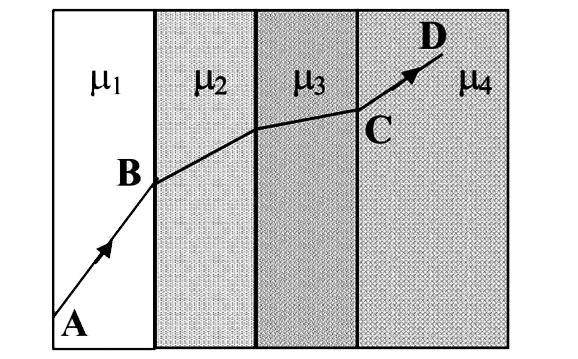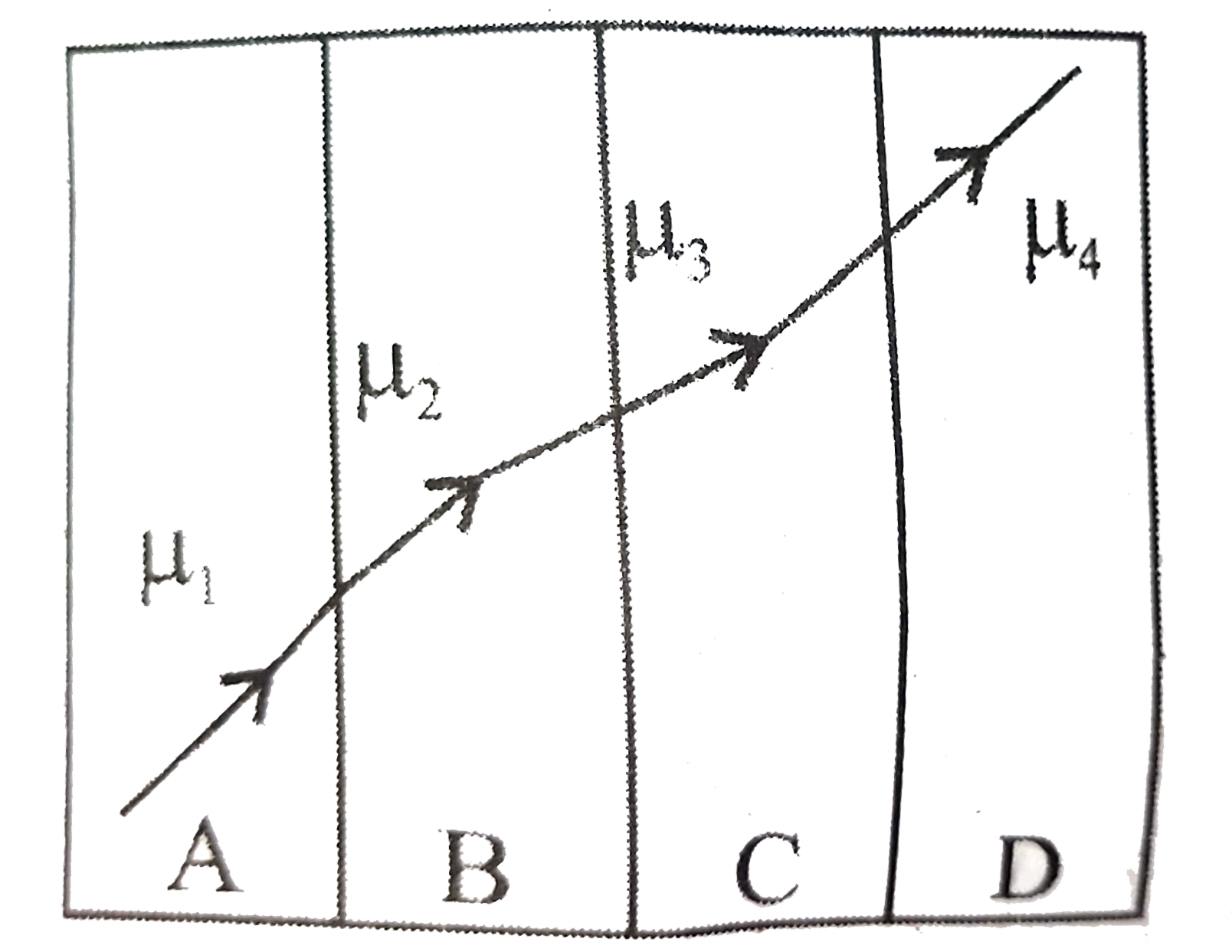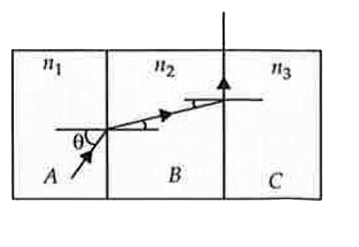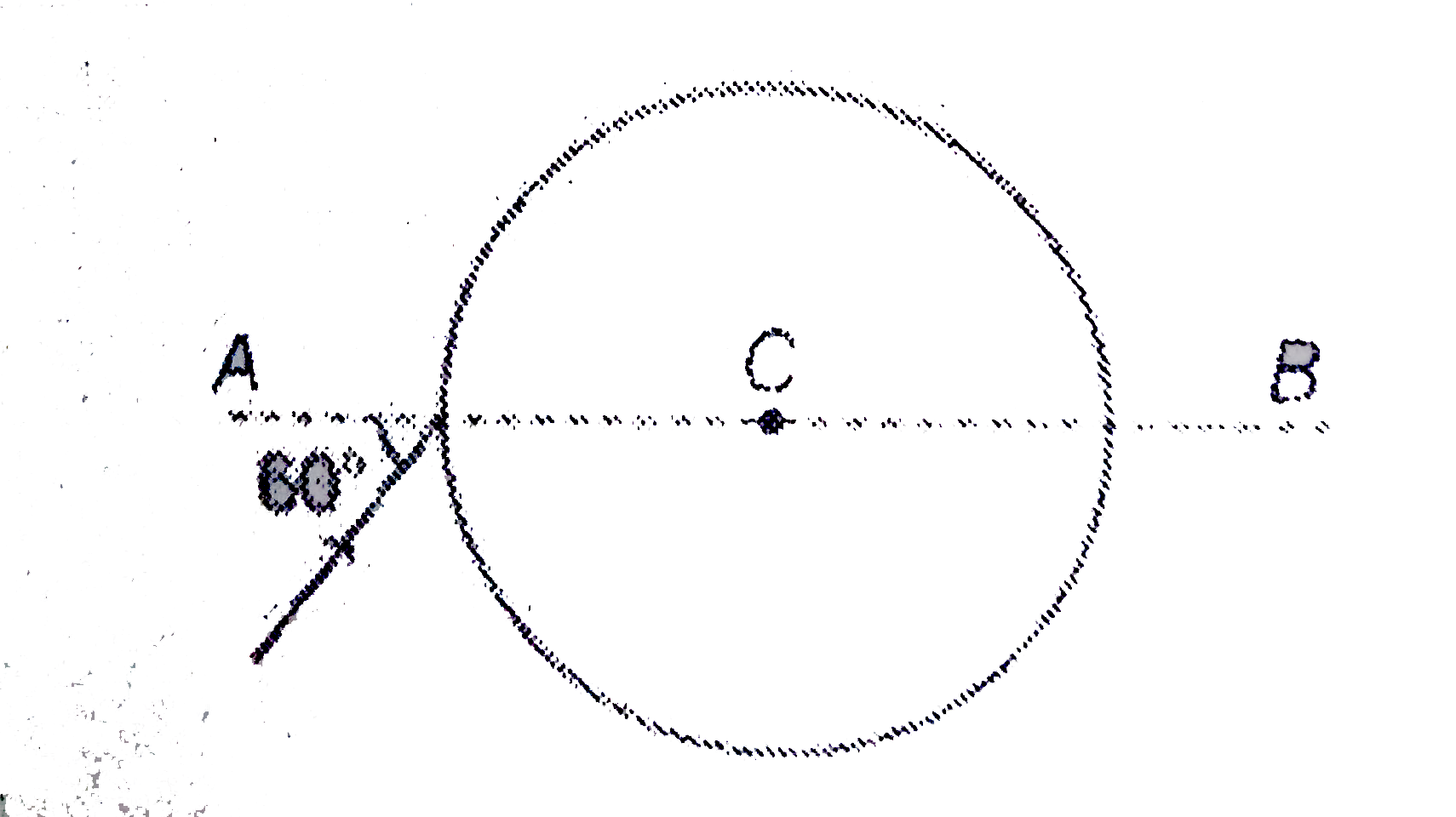A ray of light passes through four transparent media with refractive indices μ1 μ2 μ3 and μ4 as shown in the figure. The surfaces of all media are parallel. If the emergent ray CD is parallel to the incident ray AB we must havea μ1 = μ2 b μ2 = μ3 c μ3 = μ4 d μ4 = μ1
we must have d μ4 = μ1
Related Solutions
A ray of light passes through four transpar ent media with refractive indices and as shown in figure. The surfaces of all media are parallel. If the emergent ray is parallel to the incident ray, we must hav
 View Solution
View SolutionA ray of light passes through four transparent media with refractive indices,, and as shown in the figure. The surfaces of all media are parallel. If the emergent ray CD is parallel to the incident ray AB, we must have
 View Solution
View SolutionA ray of light passes through four transparent media with refractive indices,, and as shown in the figure. The surfaces of all media are parallel. If the emergent ray CD is parallel to the incident ray AB, we must have
 View Solution
View SolutionA ray of light passes through four transparent media with refractive indices mu_1 , mu_2 , mu_3 and mu_4 as shown in the figure. The surfaces of all media are parallel. If the emergent ray CD is parallel to the incident ray AB, we must have
View SolutionA ray of light passes through four transparent media with refractive indices mu_1,mu_2,mu_3 and mu_4 as shown in the figure. The surfaces of all media are parallel. If the emergent ray CD in parallel to the incident ray AB we must have
View SolutionA ray of light passes through four transparent media with refractive indices mu_(1),mu_(2),mu_(3)andmu_(4) as shown in the figure. The surface of are media are parallel. If the emergent ray CD is parallel to the incident ray AB , we must have
View SolutionA ray of light passes through four transparent media with refractive indices as shown in fig.

The surfaces of all media are parallel. If the emerged ray CD is parallel to the incident ray AB, we must have:View SolutionA ray of light passes through four transparent media wit refractive index n_1, n_2, n_3 and n_4 as shown. The surfaces of all media are paralleld If the emergent ray DE is parallel to incident ray AB, then
View SolutionA ray of light passes through four transparent media with refractive indices and as shown in the figure. The surfaces of all media are parallel. If the emergent ray CD is parallel to the incident ruy AB, we must have
 View Solution
View SolutionA ray of light passes through four transpar ent media with refractive indices and as shown in figure. The surfaces of all media are parallel. If the emergent ray is parallel to the incident ray, we must hav
 View Solution
View SolutionA ray of light passes through four transpar ent media with refractive indices mu_(1),mu_(2), mu_(3) and mu_(4) as shown in figure. The surfaces of all media are parallel. If the emergent ray is parallel to the incident ray, we must hav
View SolutionA ray of light passes through four transparent media with refractive indices mu_(1),mu_(2),mu_(3), and mu_(4) as shown in figure. The surfaces of all media are paralle. If the emerent ray CD is parallel to the incident ray AB, we must have
View SolutionA ray of light passes through four transparent media with refractive indices mu_(1),mu_(2),mu_(3), and mu_(4) as shown in figure. The surfaces of all media are paralle. If the emerent ray CD is parallel to the incident ray AB, we must have
View SolutionA ray of light passes through four transparent media with refractive indices mu_(1),mu_(2),mu_(3), and mu_(4) as shown in figure. The surfaces of all media are paralle. If the emerent ray CD is parallel to the incident ray AB, we must have
View SolutionA ray of light passes through four transparent media with refractive index n_(1) ,n_(2),n_(3) and n_(4) as shown, the surface of all media are parallel If the emergent ray DE is parallel to incident ray AB, then
View SolutionA ray of light passes through four transparent media with refractive index n_(1),n_(2),n_(3)andn_(4) as shown. The surface of all media are parallel If the emergent ray DE is parallel to incident ray AB, then
View SolutionA light ray travels through four adjacent media of refractive indices mu_(1), mu_(2), mu_(3), mu_(4) as shown in the Fig. 2.83. The bases of the media are parallel. If emergent ray is parallel to the incident ray AB then
View SolutionA,B and C are the parallel sided transparent media of refractive index and respectively.
The are arranged as shown in the figure. A ray is incident at an angle on the surface of separation of A and B which is as shown in the figure. After the refraction into the medium B, the ray grazes the surface of separation of the media B and C. Then, = View Solution
View Solutionएक प्रकाश किरण चार पारदर्शी माध्यमों से गुजरती है जिनके अपवर्तनांक क्रमशः तथा हैं | सभी माध्यमों के तल परस्पर समान्तर हैं | यदि निर्गत किरण CD, आपतित किरण AB के समान्तर है, तब
 View Solution
View SolutionA ray of light falls on a transparent sphere with centre at C as shown in figure. The ray emerges from the sphere parallel to line AB. The refractive index of the sphere is
 View Solution
View Solution
